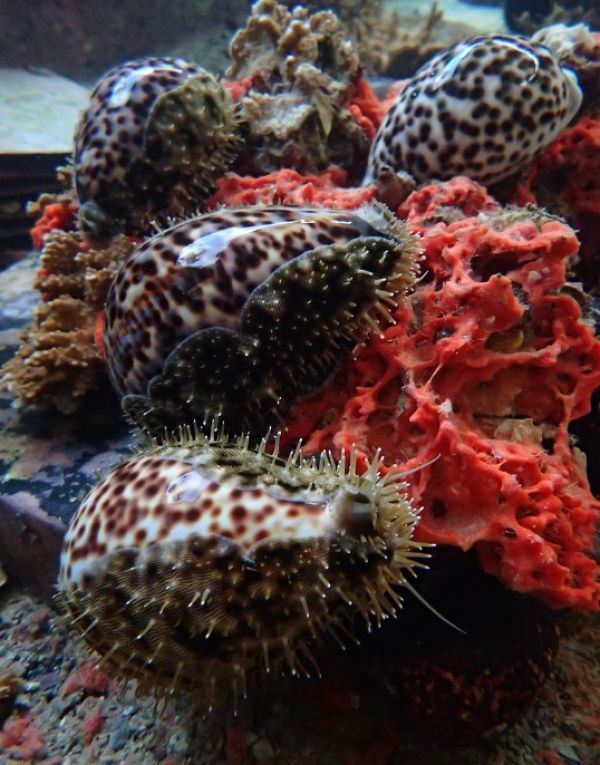The Hawaiian tiger cowrie (Leho-kiko in Hawaiian) is a voracious predator of alien sponges such as the orange keyhole sponge, which can overgrow native corals and has become a concern as it spreads across reefs in Kāneʻohe Bay, Oʻahu. This was discovered by researchers at the University of Hawai‘i at Mānoa’s Hawaiʻi Institute of Marine Biology (HIMB) in a study published in Marine Ecology Progress Series, which found that each cowrie, a type of sea snail, eats more than half its body weight in sponges every week.
“We found that cowries ate most species of alien sponges that we offered them, and that a single snail can consume an entire sponge the size of your fist in roughly a week,” said Jan Vicente, lead author of the study and postdoctoral researcher at HIMB in the UH Mānoa School of Ocean and Earth Science and Technology (SOEST).
Alien invasive species, such as killer algae in the Mediterranean or lionfish in the Caribbean, can devastate native ecosystems. Hawaiʻi ranks among the highest in the world for both the number of marine alien invasive species and the success of those invaders in taking over space from native species. Prevention, early detection and rapid removal are the best tools to prevent impacts from alien species, because once invaders become established, efforts to eradicate them are expensive and often unsuccessful.
One relatively cheap option for management of alien species is known as biocontrol, in which a natural predator of the alien species is also introduced to control the invader. Hawaiʻi is also home to some failures of past biocontrol efforts, such as the mongoose and wolf snail that created new problems rather than solving existing ones. However, not all biocontrol efforts need to use one alien species to control another, because in some cases a native species can serve that critical role to control an alien invader.
Read more at University of Hawaiʻi at Mānoa
Image: Hawaiian tiger cowries feeding on the Orange keyhole sponge (Mycale grandis). (Credit: Leon Weaver)


